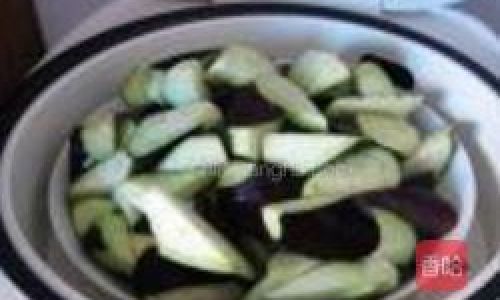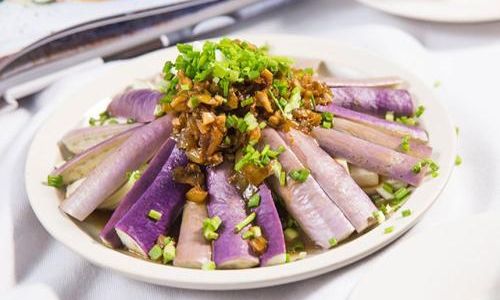Table of content
Introducing solid foods to your baby is a milestone that requires careful consideration of texture, flavor, and nutritional value. Among the many options available, steamed eggplant stands out as an ideal choice for its soft consistency, mild taste, and rich nutrient profile. This article guides parents through the process of creating a safe, delicious, and baby-friendly steamed eggplant dish, ensuring a positive introduction to this versatile vegetable.
Why Steamed Eggplant is an Excellent Choice for Babies
Eggplant, also known as aubergine, is a member of the nightshade family and is celebrated for its creamy texture when cooked. For infants, steamed eggplant offers several advantages:

- Digestibility: Steaming breaks down the vegetable’s fibrous structure, making it easy for tiny tummies to process.
- Nutrient Retention: Unlike frying or roasting, steaming preserves essential vitamins and minerals, including vitamin K, folate, and manganese.
- Mild Flavor: Its subtle taste allows babies to explore new flavors without overwhelm.
- Versatility: Steamed eggplant can be served plain, mixed with other purees, or incorporated into simple recipes like pasta or rice dishes.
Selecting the Perfect Eggplant
The foundation of a great baby meal begins with choosing the right ingredient. When selecting eggplants, prioritize freshness and quality:
- Size Matters: Opt for smaller, younger eggplants, as they tend to have thinner skins and fewer seeds, which can be bitter.
- Texture Check: Gently press the skin—it should spring back slightly, indicating ripeness. Avoid eggplants with soft spots or wrinkled skin.
- Color: Look for vibrant, glossy skin without blemishes. Common varieties like globe or Italian eggplants work well.
Preparation Step-by-Step
Washing and Cleaning
Thoroughly rinse the eggplant under cool running water to remove dirt or pesticides. Pat dry with a clean kitchen towel.
Peeling (Optional)
While the skin is edible, some parents prefer peeling it for younger babies to eliminate any texture concerns. Use a vegetable peeler to gently remove the outer layer.
Slicing
Cut the eggplant into small, manageable pieces. For babies just starting solids, aim for 1-inch cubes to ensure even cooking and easy mashing.
Soaking (Optional)
To reduce bitterness, soak the slices in salted water for 15–20 minutes. Rinse thoroughly afterward. This step is optional but recommended for older eggplants.

Cooking Techniques: Steaming to Perfection
Steaming is the gentlest cooking method for preserving nutrients and achieving a silky texture. Follow these steps:
- Equipment: Use a steamer basket inserted into a pot with 1–2 inches of boiling water. Alternatively, a colander placed over a pot works well.
- Timing: Arrange the eggplant cubes in a single layer in the steamer. Cover and steam for 8–10 minutes, or until tender when pierced with a fork.
- Check Doneness: Overcooking can result in a waterlogged texture, while undercooking leaves hard pieces. Aim for a soft, custard-like consistency.
Transforming Steamed Eggplant into Baby Food
Once cooked, the eggplant is ready to be customized for your baby’s preferences and developmental stage:
For 6–8 Months (Smooth Puree)
- Transfer the steamed eggplant to a blender or food processor.
- Add a splash of breast milk, formula, or water to achieve a runny consistency.
- Blend until smooth, pausing to scrape down the sides as needed.
For 8–10 Months (Mashed Texture)
- Use a fork or potato masher to lightly crush the eggplant.
- Leave small lumps to encourage chewing practice.
For 10–12 Months (Chunky Mix-Ins)
- Dice the steamed eggplant into tiny pieces.
- Combine with soft foods like mashed avocado, sweet potato, or cooked grains.
Flavor Pairings and Variations
Elevate the dish with baby-safe seasonings and mix-ins:
- Herbs: A pinch of dried basil or oregano adds aromatic depth.
- Spices: A touch of cinnamon or cumin introduces subtle warmth.
- Healthy Fats: Drizzle with olive oil or mix in a dollop of Greek yogurt for extra creaminess.
- Protein Boost: Blend with cooked lentils, chicken, or tofu for a balanced meal.
Safety and Allergy Considerations
While eggplant allergies are rare, introduce it gradually to monitor for reactions:
- First Serving: Offer a small amount (1–2 teaspoons) and wait 3–5 days before reintroducing.
- Signs of Allergy: Watch for hives, vomiting, or diarrhea. Consult a pediatrician if symptoms arise.
- Choking Hazards: Ensure the texture is appropriate for your baby’s age and chewing abilities.
Storage Tips for Busy Parents
Preparing batches in advance saves time and ensures quick meals:

- Refrigeration: Store cooled puree in airtight containers for up to 3 days.
- Freezing: Use ice cube trays to freeze individual portions. Transfer to freezer bags once frozen; they’ll keep for up to 3 months.
- Thawing: Reheat gently in a saucepan or microwave, stirring frequently to eliminate hot spots.
Nutritional Benefits: More Than Just a Vegetable
Steamed eggplant packs a nutritional punch tailored for growing babies:
- Fiber: Aids digestion and prevents constipation.
- Antioxidants: Anthocyanins in purple eggplants support brain health.
- Vitamins and Minerals: Folate aids cell growth, while vitamin K strengthens bones.
Creative Meal Ideas
Incorporate steamed eggplant into family-friendly dishes:
- Eggplant and Chickpea Mash: Blend with chickpeas and a dash of paprika.
- Mini Eggplant Fritters: Mix with grated zucchini and oats, then pan-fry in olive oil.
- Rainbow Veggie Bowl: Serve alongside steamed carrots, peas, and quinoa.
Addressing Common Concerns
Q: My baby refuses eggplant. What should I do?
A: Persistence is key. Reintroduce it after a week, paired with familiar flavors like applesauce or mashed banana.
Q: Can I use frozen eggplant?
A: Fresh is best for flavor, but frozen works in a pinch. Thaw and steam as usual.
Q: Is eggplant gassy for babies?
A: Like many vegetables, it may cause mild gas. Introduce it alongside other low-fiber foods initially.

Conclusion: A Lifelong Love for Vegetables
Serving steamed eggplant to your baby is more than just a meal—it’s a step toward fostering healthy eating habits. By prioritizing fresh ingredients, mindful preparation, and creative presentation, you’re laying the groundwork for a child who appreciates the natural goodness of whole foods. Whether served solo or mixed into larger dishes, this humble vegetable deserves a place in your baby’s culinary journey.
With its velvety texture and adaptability, steamed eggplant proves that baby food need not be bland or boring. Experiment with combinations, celebrate small victories (like a successfully swallowed spoonful), and remember that every meal is an opportunity to nourish both body and curiosity. Bon appétit, little one!






0 comments